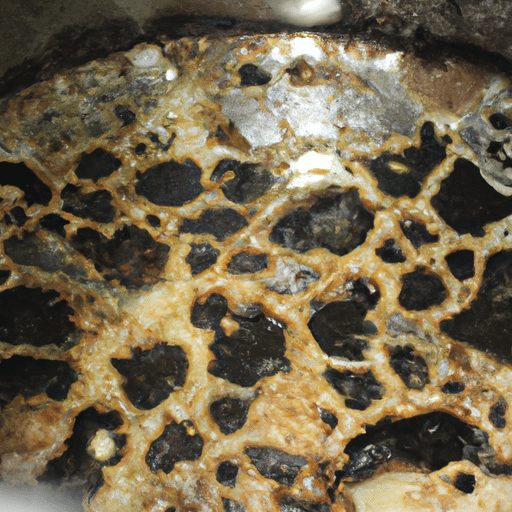If you’re a coffee lover like us, you probably have a Bialetti Moka pot sitting proudly on your kitchen countertop. These charming little stovetop coffee makers have become an iconic symbol of Italian espresso culture. However, just like any other coffee appliance, your beloved Moka pot requires regular maintenance to ensure it keeps brewing that perfect cup of joe. In this article, we will uncover the best method for descaling your Bialetti Moka pot, leaving it clean, pristine, and ready to produce that rich, aromatic coffee you love so much.
Why is descaling important?
Descaling is an important maintenance task for any Bialetti Moka pot owner. There are several reasons why regular descaling is crucial. Firstly, descaling prevents the buildup of mineral deposits inside the pot. Over time, minerals such as calcium and magnesium can accumulate and form a layer of scale, which can affect the taste of your coffee. Descaling ensures that your coffee retains its optimal flavor. Additionally, regular descaling helps to extend the lifespan of your Moka pot by preventing clogs and corrosion.
Materials needed
To descale your Bialetti Moka pot, you will need a few simple materials. Warm water is essential, as it helps to dissolve the mineral deposits. You can choose between using white vinegar or lemon juice as an acidic descaling agent. Both options work effectively in removing the scale. You will also need a soft cloth or sponge for cleaning, a small brush or toothbrush for scrubbing hard-to-reach areas, and dish soap for optional additional cleaning.
Regular maintenance
Apart from descaling, there are a few other maintenance practices that can help keep your Bialetti Moka pot in top condition. After each use, it is important to rinse the pot thoroughly. This helps to remove any coffee residue and prevents it from drying and sticking to the surfaces. It is also advisable to avoid using the dishwasher for cleaning your Moka pot, as the high temperatures and harsh detergents can be damaging. Finally, make sure to dry your Moka pot thoroughly after cleaning to prevent any moisture-related issues.
Descaling methods
There are several methods you can choose from when it comes to descaling your Bialetti Moka pot. The three most common methods are vinegar descaling, lemon juice descaling, and citric acid descaling. Each method has its own advantages, and the choice ultimately depends on personal preference and availability of ingredients.
Vinegar descaling
Vinegar is a popular and effective descaling agent that can easily be found in most households. Here is a step-by-step guide on how to descale your Bialetti Moka pot using vinegar:
Step 1: Preparation
Start by completely disassembling your Moka pot and gathering all the necessary materials.
Step 2: Removing the gasket and filter
Carefully remove the gasket and filter from the Moka pot. These components can be soaked separately for a more thorough cleaning.
Step 3: Soaking the parts in vinegar
Fill a container with equal parts warm water and vinegar. Submerge the disassembled parts in the mixture and let them soak for about 30 minutes to an hour. This will help to dissolve and loosen the mineral deposits.
Step 4: Cleaning the body
While the parts are soaking, use a soft cloth or sponge soaked in the vinegar mixture to clean the inside and outside of the Moka pot. Pay extra attention to any stubborn stains or scale buildup.
Step 5: Rinsing and reassembling
After the soaking time is up, thoroughly rinse all the components with warm water. Make sure to remove any vinegar residue to avoid affecting the taste of your coffee. Finally, reassemble the Moka pot, making sure all parts are properly fitted and tightened.
Lemon juice descaling
Lemon juice is another natural and effective descaling agent that can be used as an alternative to vinegar. Here is a step-by-step guide on how to descale your Bialetti Moka pot using lemon juice:
Step 1: Preparation
As with the vinegar method, begin by gathering all the necessary materials and fully disassembling your Moka pot.
Step 2: Disassembling the Moka pot
Remove the gasket and filter from the pot. These components can be soaked separately for a more thorough cleaning.
Step 3: Soaking in lemon juice
Fill a container with warm water and add the juice of several fresh lemons. Submerge the disassembled parts in this lemon juice mixture and let them soak for about 30 minutes to an hour. The acidity of the lemon juice will help dissolve the mineral deposits.
Step 4: Cleaning the parts
Using a soft cloth or sponge soaked in the lemon juice mixture, clean both the interior and exterior of the Moka pot. Pay attention to any stubborn stains or scale buildup.
Step 5: Rinsing and reassembling
Thoroughly rinse all the components of the Moka pot with warm water to remove any lemon juice residue. Ensure that all parts are completely clean and dry before reassembling the pot.
Citric acid descaling
Citric acid is a powerful and widely available descaling agent. It can be purchased in powder form and diluted for use. Here is a step-by-step guide on how to descale your Bialetti Moka pot using citric acid:
Step 1: Preparation
Prepare all the necessary materials as you would for the previous methods, and fully disassemble your Moka pot.
Step 2: Dissolving citric acid
Follow the instructions on the citric acid package to prepare the appropriate dilution. Mix the citric acid powder with warm water until it is fully dissolved.
Step 3: Soaking and cleaning
Submerge the disassembled parts of the Moka pot in the citric acid solution and let them soak for about 30 minutes to an hour. Use a soft cloth or sponge soaked in the solution to clean the pot’s interior and exterior surfaces.
Step 4: Rinsing and reassembling
Thoroughly rinse all the components with warm water to remove any citric acid residue. Ensure that everything is clean and dry before reassembling the Moka pot.
Removing stubborn stains
Despite regular descaling, stubborn stains may still occur. Here are a few methods to tackle those persistent stains:
Using baking soda
Make a paste by mixing baking soda with water and apply it to the stained areas. Let it sit for a few minutes and then scrub with a soft brush or toothbrush. Rinse thoroughly and repeat if necessary until the stains are removed.
Scrubbing with a toothbrush
For hard-to-reach or intricate areas, use a toothbrush to scrub away the stains. The bristles of a toothbrush can easily reach crevices and corners, ensuring a thorough cleaning.
Soaking in vinegar overnight
If the stubborn stains persist, try soaking the affected parts in vinegar overnight. The acidity of the vinegar will help break down the stains, making them easier to remove. After soaking, rinse the parts thoroughly to remove any vinegar residue.
Tips for descaling
To achieve the best results when descaling your Bialetti Moka pot, keep the following tips in mind:
Choose the right descaling method
Experiment with different descaling methods to find the one that works best for you. Factors such as the severity of scale buildup and personal preference can influence your choice.
Follow manufacturer instructions
Always refer to the manufacturer’s instructions for your specific model of the Bialetti Moka pot. They may provide specific recommendations or precautions for descaling.
Use filtered or distilled water
Using filtered or distilled water can help reduce the chances of scale buildup. Tap water often contains minerals that contribute to scaling, so using cleaner water can prolong the intervals between descaling.
Regularly check for mineral buildup
Keep an eye out for signs of scale buildup, such as discoloration or reduced water flow. Regularly inspecting your Moka pot will allow you to catch any issues early on and prevent more significant problems.
Replace gaskets as needed
Over time, the gaskets in your Moka pot may wear out or deteriorate. If you notice any leaks or decreased performance, it may be time to replace the gaskets. Regularly checking and replacing them will help maintain the quality of your coffee.
Conclusion
Maintaining and regularly descaling your Bialetti Moka pot is essential for enjoying delicious coffee for years to come. By preventing mineral buildup, ensuring optimal coffee flavor, and extending the lifespan of your Moka pot, descaling becomes a beneficial and necessary part of the brewing process. With the right materials, methods, and maintenance practices, you can keep your Moka pot in excellent condition and continue to enjoy the rich flavors and aromas of freshly brewed coffee.





































